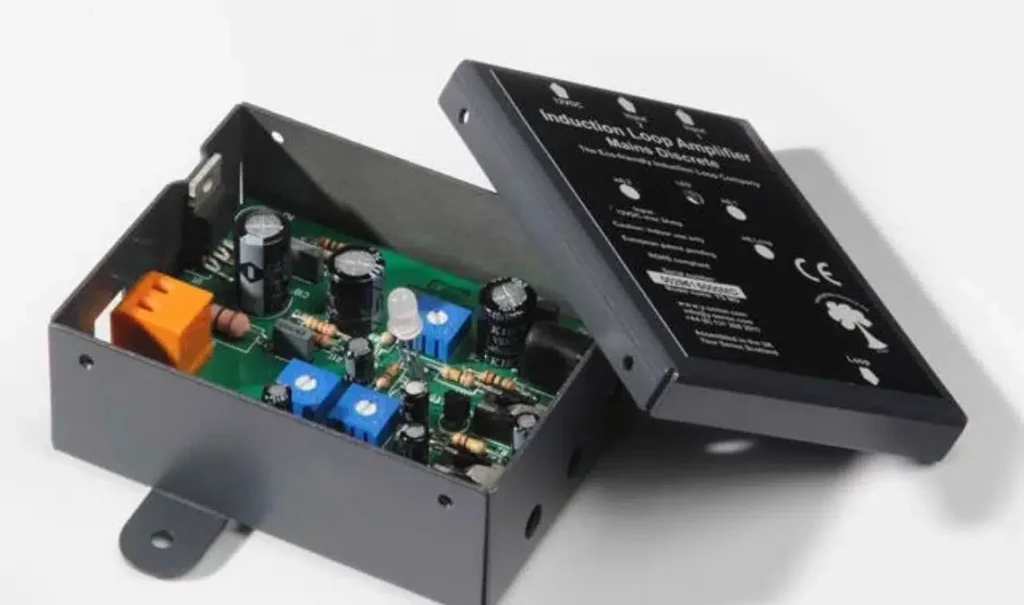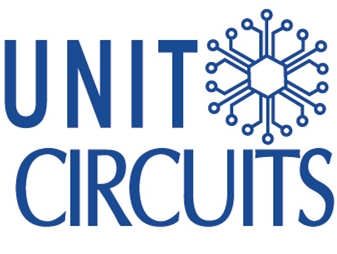Your Trusted Partner for Box Building
A box build assembly refers to the process of assembling printed circuit boards (PCBs), cables, and other electronic components into a fully enclosed chassis or enclosure. It is one of the later stages of electronics manufacturing, coming after PCB fabrication and component assembly.
Box build assembly combines mechanical, electrical, and aesthetic design to create a finished electronic product ready for use by the end customer. It requires skills in project management, supply chain coordination, quality control, mechanical integration, and testing. Companies that specialize in box builds are known as contract manufacturers or electronic manufacturing services (EMS).


Box Building Capability
Unit Circuits offers comprehensive Box Building services as part of our Electronics Manufacturing Services (EMS). We specialize in assembling complete enclosures, integrating your PCBs with necessary hardware components, and ensuring that the final product is ready for market.
Key Features:
- Custom Enclosure Assembly: We tailor the box building process to fit specific customer requirements, from small-scale prototypes to large-volume production runs.
- Component Sourcing and Integration: Our extensive network of suppliers and partners allows us to source high-quality components at competitive prices, integrating them seamlessly into your product.
- Testing and Quality Assurance: Every unit undergoes rigorous testing to ensure functionality, reliability, and compliance with international standards.
Process:
- Design Consultation: We start with a detailed discussion to understand your product requirements, including mechanical and electronic specifications.
- Prototyping: A prototype is developed for your approval, ensuring that all specifications are met.
- Manufacturing: We scale up to full production while maintaining strict quality controls.
- Testing: Comprehensive functional and stress tests are conducted.
- Packaging and Delivery: Products are securely packaged and delivered according to your logistics preferences.
Advantages:
- One-Stop Solution: From PCB fabrication to final assembly, we handle all steps, reducing complexity and improving turnaround time.
- Scalability: Our processes are designed to scale with your production needs, whether you’re launching a new product or scaling an existing one.
- Cost Efficiency: We optimize the manufacturing process to reduce costs without compromising quality.
Why Choose Us?
With over 20 years of experience in electronics manufacturing and a commitment to innovation and quality, Unit Circuits is your ideal partner for Box Building solutions. Our services are tailored to meet the diverse needs of industries such as consumer electronics, medical devices, and automotive electronics, ensuring that your products are built to the highest standards.
8 Advantages of Box Building in Unit Circuits
Integrated One-Stop Shop:
Streamline operations with a single source for design, procurement, manufacturing, assembly, and testing. Ideal for optimizing supply chains and reducing overhead.
Customized Solutions:
Tailored services to meet specific client needs, supporting both complex electronics and simple consumer products with precision.
Rigorous Quality Control:
Adherence to international standards ensures reliability and durability, backed by a robust quality management system from raw materials to final products.
Cost Efficiency:
Scale production and optimized processes reduce costs. Bulk procurement further cuts expenses, offering competitive market pricing.
Rapid Market Response:
Swift production from concept to completion, significantly shortening time-to-market, vital for industries needing to adapt quickly to market and technological changes.
Technological and Innovation Leadership:
Leading manufacturers leverage advanced R&D capabilities to maintain industry leadership, continuously enhancing performance and driving product innovation.
Flexible Production Capabilities:
Adjustable production lines and volumes allow responsiveness to market demands, ensuring efficiency whether for small batches or mass production.
Comprehensive Customer Support:
Full spectrum support from technical assistance to after-sales service ensures client satisfaction, with expert teams ready to address any issues during production or post-delivery.
What is a box build used for?
Box builds are used in a wide range of products, from consumer electronics like smartphones and laptops to industrial equipment and medical devices. Here are some uses and applications:
- Devices: Smartphones, tablets, smartwatches.
- Purpose: Protects and integrates electronics for daily use and sophisticated operations.
- Applications: Diagnostic equipment, patient monitoring systems.
- Purpose: Ensures reliable operation and protection from environmental conditions, critical for patient safety and accuracy.
- Uses: Communication equipment, network devices.
- Purpose: Facilitates the setup of robust and reliable communication infrastructures.
- Components: Control units, infotainment systems.
- Purpose: Provides housing for electronics that must endure the rigorous conditions of automotive environments.
- Devices: Routers, switches.
- Purpose: Ensures ease of installation and maintenance while protecting sensitive electronics.


- Field: Scientific research, quality control.
- Purpose: Houses instruments that require a controlled environment to maintain precision and accuracy.
- Applications: Avionics systems, communication devices.
- Purpose: Delivers robust and secure enclosures necessary for the high reliability demanded in these sectors.
- Devices: Power inverters, solar inverters, control systems.
- Purpose: Protects critical energy management systems, facilitating reliable energy distribution and management.
FAQs about Box Building
Box Building involves the comprehensive assembly of electronic systems including PCBs, wiring, and component integration into final product enclosures.
We implement a rigorous multi-stage testing protocol, ensuring every unit meets global standards for reliability and durability, reflecting our two decades of industry expertise.
Absolutely, we offer scalable solutions tailored to meet the specific needs of both small-scale projects and large-volume production.
Our optimized supply chain and efficient production processes reduce costs, providing you with high-quality manufacturing solutions at competitive prices.
We utilize advanced project management tools and techniques to coordinate all aspects of production, ensuring timely delivery and quality compliance.
Only the highest-quality materials and components sourced from trusted suppliers are used, ensuring the final product meets our rigorous standards.
Each product undergoes extensive functional and stress tests, including environmental simulations, to ensure top-tier performance and longevity.
With our fast quote and delivery system, we expedite processes without compromising quality, addressing urgent requirements efficiently.
What are the difficulties in box build assembly?
Box build assembly, while crucial for the integration of electronic systems into their final products, presents several challenges that manufacturers must navigate to ensure quality and efficiency. Here are some of the key difficulties involved in box build assembly:
-
Complexity of Assembly:
- Box builds can range from simple enclosures with a few components to complex systems with multiple layered assemblies and intricate wiring. Managing these varying levels of complexity requires meticulous planning and precision.
-
Supply Chain Management:
- Effective supply chain management is crucial for timely and cost-effective production. Challenges include managing multiple suppliers, ensuring component quality, and coordinating delivery schedules to prevent production delays.
-
Customization Requirements:
- Each box build project may require customized components and configurations. Adapting production lines and processes to accommodate these custom specifications without compromising on efficiency or cost can be challenging.
-
Quality Control:
- Maintaining high quality throughout the assembly process is vital, especially for industries such as medical devices or aerospace where safety is paramount. Implementing rigorous testing and quality assurance protocols is necessary but can be resource-intensive.
-
Integration of Diverse Technologies:
- Modern electronic products often incorporate various technologies, including software, hardware, and mechanical components. Integrating these disparate elements seamlessly into a single functioning unit requires advanced engineering expertise.
-
Regulatory Compliance:
- Electronic products are subject to a range of regulations depending on their use and the markets they are sold in. Ensuring compliance with these regulations throughout the design and manufacturing process adds another layer of complexity.
-
Thermal Management:
- Effective heat dissipation is critical in electronic assemblies to prevent overheating and ensure product reliability. Designing enclosures that allow for adequate cooling while protecting sensitive components is a significant challenge.
-
Scalability Issues:
- Transitioning from prototype to mass production involves scaling up the assembly process without losing quality or increasing costs disproportionately. Achieving this scalability can be particularly challenging for complex assemblies.
-
After-Sales Support:
- The assembly process doesn’t end with the shipment of the product. Providing effective after-sales support, including maintenance, repairs, and upgrades, is crucial but can be complicated by the intricacies of the box build product.
-
Environmental Considerations:
- Environmental factors such as humidity, temperature, and exposure to chemicals can affect the performance of electronic enclosures. Designing assemblies that can withstand these conditions while maintaining functionality is challenging.
Addressing these challenges requires a combination of advanced engineering, effective project management, and stringent quality control processes. Success in box build assembly often hinges on the ability to adapt and innovate in response to these complexities.


 Assemble 20 PCBAS for $0
Assemble 20 PCBAS for $0